
Modified Ashworth Scale Pdf Resourceful Utility Gambaran
M o d i f i e d A s h wo r t h S c a l e ( M A S ) Grade Description 0 No increase in muscle tone 1 Slight increase in muscle tone, manifested by a catch
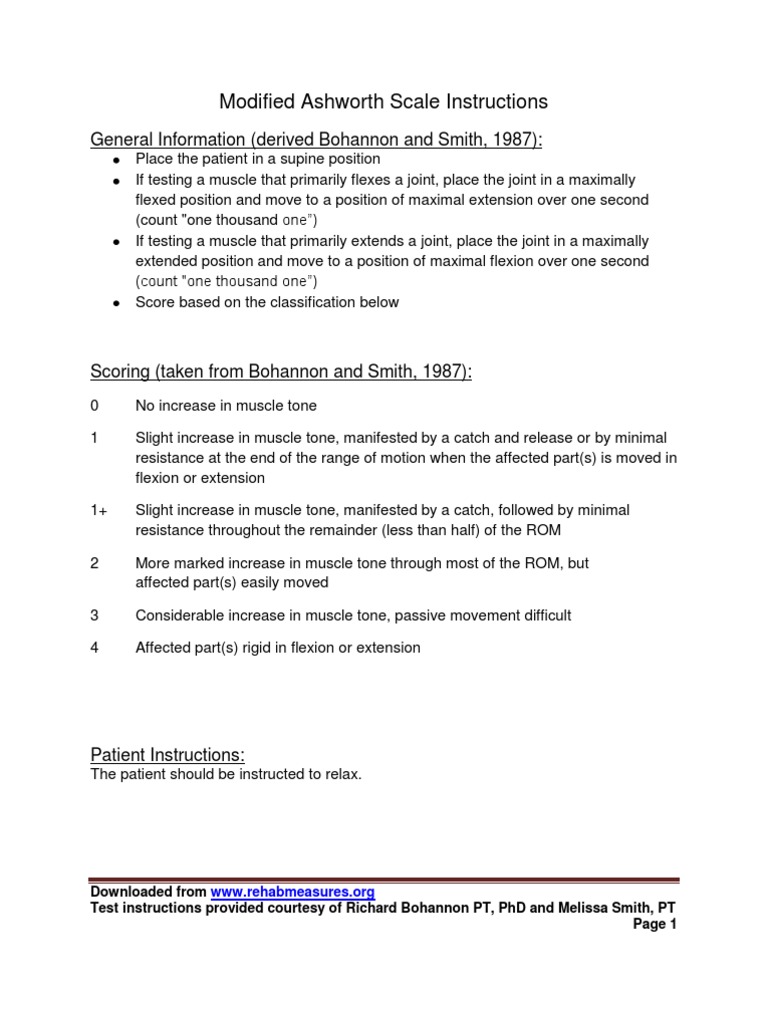
Modified Ashworth Scale Instructions
The Modified Ashworth scale (MAS) measures resistance during passive soft-tissue stretching and is used as a simple measure of spasticity. Scoring (taken from Bohannon and Smith, 1987): 0: No increase in muscle tone;

Modified ashworth scale Physical therapy student, Physical therapy
Modified Ashworth Scale Instructions General Information (derived Bohannon and Smith, 1987): Place the patient in a supine position If testing a muscle that primarily flexes a joint, place the joint in a maximally flexed position and move to a position of maximal extension over one second (count "one thousand one")
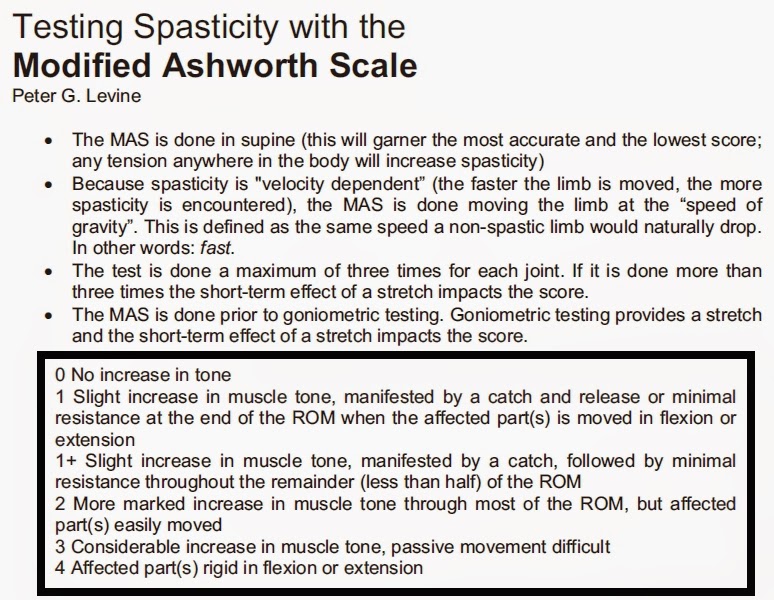
Stronger After Stroke Blog (THE STROKE RECOVERY BLOG) March 2007
The modified Ashworth Scale is recommended to combine it with a quantitative measure of spasticity in every examination and be regarded as a measure of quality of movement, and standardization and re-examination of its reliability is particularly necessary. Introduction: The modified Ashworth Scale is the most commonly used measurement tool to evaluate spasticity in adults and CP-children.

Modified Ashworth Scale (Spasticity) Occupational therapy assistant
In this video, we explore the grading on the Modified Ashworth Scale (MAS), so that you understand how to grade a patient's spasticity.What is Spasticity? |.
【2023年版】脳卒中後の痙縮エビデンス25本まとめ【セラピスト向け】 脳卒中専門/東京都世田谷区の自費リハビリ施設|BRAIN
Background: The Ashworth Scale and the modified Ashworth Scale are the primary clinical measures of spasticity. A prerequisite for using any scale is a knowledge of its characteristics and limitations, as these will play a part in analysing and interpreting the data.
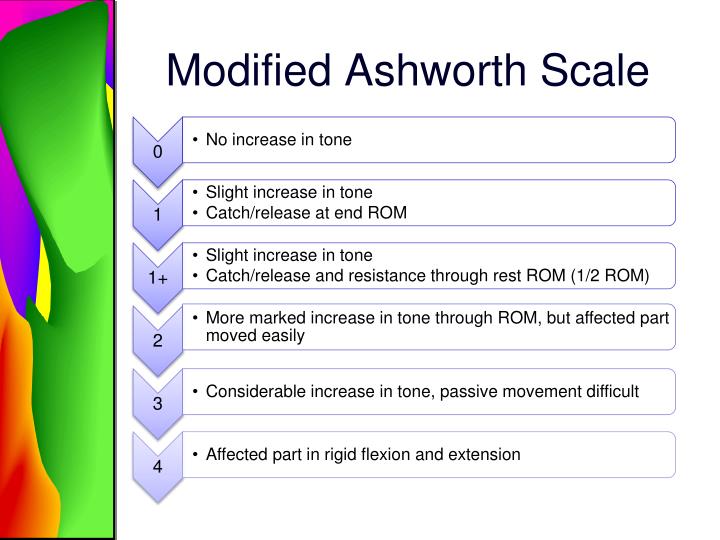
Modified Ashworth Scale Printable
The modified Ashworth scale is a muscle tone assessment scale used to assess the resistance experienced during passive range of motion, which does not require any instrumentation and is quick to perform. The MAS is the current standard for clinical assessment of extremity spasticity, and the most commonly used tool to evaluate the efficacy of.

Assesschild
The Modified Ashworth Scale (MAS) is a measure of spasticity that has been found to be reliable and valid for the assessment of spasticity in people with multiple sclerosis (MS). MS is a neurological condition that affects the brain and spinal cord and can cause a wide range of symptoms. Spasticity is one common symptom, which is defined as.
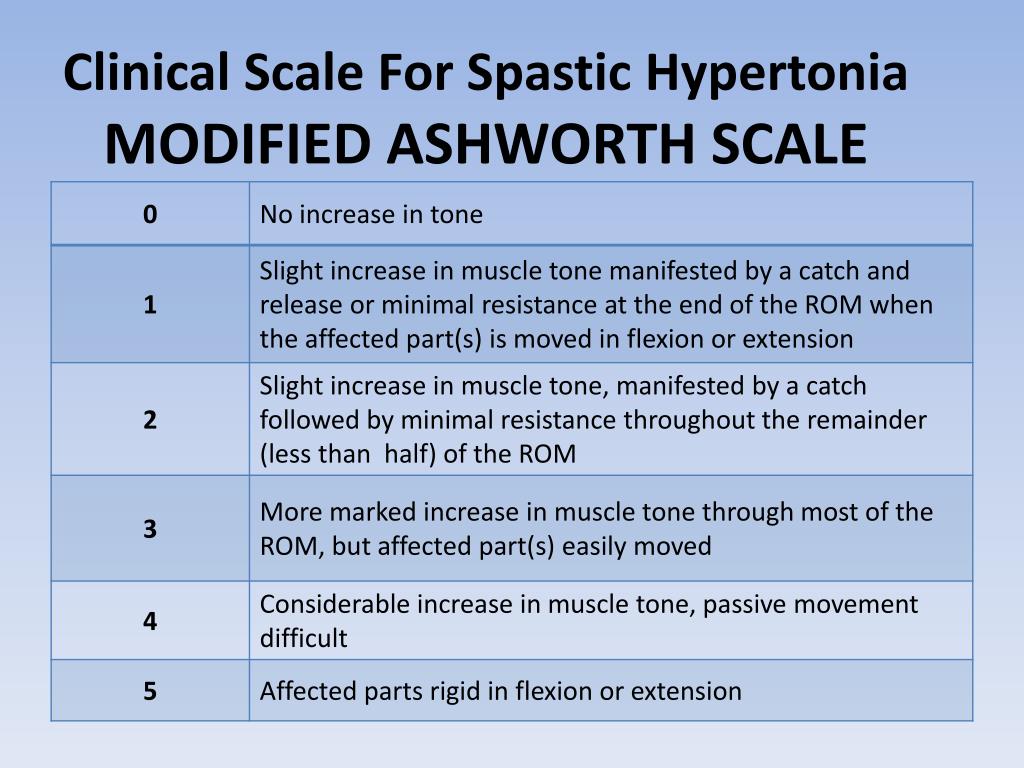
Muscle Tone Modified Ashworth Scale Gambaran
The Modified Ashworth Scale (MAS) is a revised version of the original Ashworth Scale that measures spasticity in patients with lesions to the central nervous system. MAS is an assessment that is used to measure the increase in muscle tone. MAS assigns a grade of spasticity from a 0-4 ordinal scale. The grade is assigned by moving a joint.

Modified Ashworth Scale OT stuff Pinterest The o'jays
The Modiied Ashworth Scale (MAS) measures resistance during passive soft-tissue stretching. It is a quick and easy measure that can help assess the eicacy of treatment. The following conventions prevail: • The MAS is performed in the supine position (this will garner the most accurate and the lowest score as any

Modified Ashworth Scale 10 Download Table
The modified Ashworth scale is the most universally accepted clinical tool used to measure the increase of muscle tone.[1] Spasticity was defined by Jim Lance in 1980, as a velocity-dependent increase in muscle stretch reflexes associated with increased muscle tone as a component of upper motor neuron syndrome. Spasticity has a wide range of etiologies, including brain injury, stroke, cerebral.
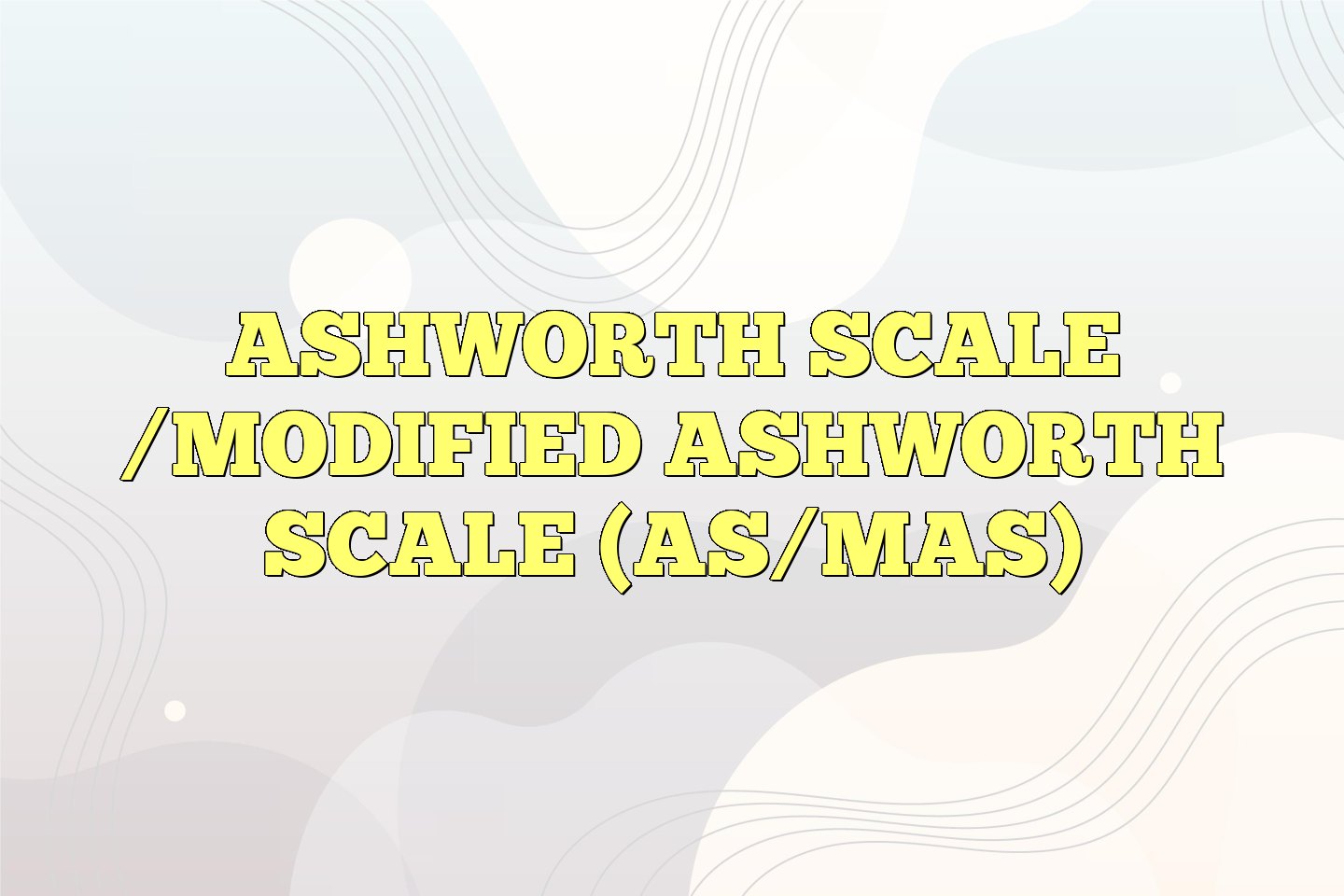
Ashworth Scale /Modified Ashworth Scale (AS/MAS)
The Modified Ashworth Scale (MAS) is the most widely used clinical tool for the measurement of spasticity. However, its reliability has been questioned in some studies [4,5,6]. In children with spastic CP or hypertonia, the reliability of MAS varied across studies [7,8,9,10].

Definitions of the Modified Ashworth Scale and the Modified Modified
Summary What it measures: Both the Ashworth Scale (AS) and Modified Ashworth Scale (MAS) are used to assess spasticity. Target Population: The AS and MAS have been utilized in the following populations: stroke, spinal cord injury, multiple sclerosis, cerebral palsy, traumatic brain injury, pediatric hypertonia, and central nervous system lesions.

Escala de Ashworth
Additionally,the Modified Ashworth Scale is widely used in research, In different patient groups such as stroke,multiple sclerosis and spinal cord injury, moderate to good intra-rater reliability and poor to moderate inter-rater reliability of the scale was found.

Modified Ashworth Scale Recovery Tech
The Ashworth Scale was originally developed in 1964, and modified by Bohannon and Smith in 1987. 13 14 The Bohannon-Smith Modified Ashworth Scale (MAS) has been recently modified by Ansari et al 15 in 2006 as the Modified Modified Ashworth Scale (MMAS; table 1). The MMAS is an ordinal level measure of spasticity, which grades the intensity of.

The Modified Ashworth Scale Everything You Need to Know
The modified Ashworth scale is the most universally accepted clinical tool used to measure the increase of muscle tone. Spasticity was defined by Jim Lance in 1980, as a velocity-dependent increase in muscle stretch reflexes associated with increased muscle tone as a component of upper motor neuron syndrome. Spasticity has a wide range of.